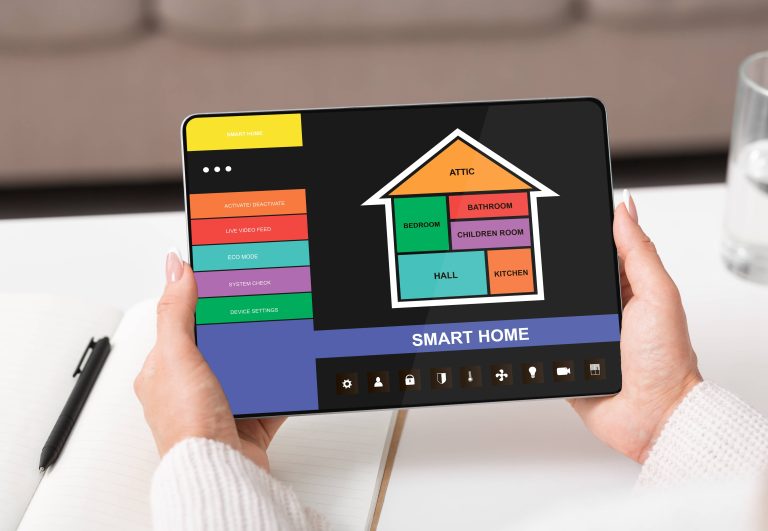
The smart home revolution has brought an unprecedented level of convenience and efficiency to our everyday lives. From intelligent thermostats and voice-activated assistants to smart locks and security systems, there’s no denying the charm and utility of a connected home. However, as these devices become an integral part of our daily routine, they also present new challenges, particularly in the realm of cybersecurity. Protecting your smart home from cyber threats is no longer an option—it’s an imperative.
Understanding the Risks
Before we delve into how to protect your smart home, it’s vital to understand the nature of the risks involved. Smart devices are essentially mini-computers, and just like any other computer, they’re susceptible to hacking, malware, and other forms of cyberattacks. Once a hacker gains access to one device, they could potentially access your entire network, leading to risks ranging from data theft to fraudulent transactions.
In one notable case, a hacker gained control of a smart camera and used it to spy on a family’s activities. Other instances involve cybercriminals hijacking smart thermostats to rack up utility bills or gaining control of smart locks to compromise home security.
Taking Preventive Measures
While the risks are real, they can be mitigated with proper precautions. Here are some best practices to fortify the security of your smart home.
1. Secure Your Network
Your home network is the first line of defense. Here’s what you can do:
– Change Default Settings: The default usernames and passwords of routers are widely known and easily guessed. Change them immediately after installation.
– Use Strong Passwords: Implement complex, unique passwords for both your home network and smart devices. A good password combines numbers, symbols, and both uppercase and lowercase letters.
– Network Segmentation: Use a separate network for your IoT devices, isolating them from your main devices like work computers and smartphones. This prevents a breach in one area from compromising the entire network.
– Enable WPA3 Encryption: Make sure your Wi-Fi is encrypted with the latest WPA3 security protocol, which offers enhanced protection compared to older standards such as WPA2.
2. Regularly Update Firmware
Manufacturers frequently release firmware updates to patch security vulnerabilities. Skipping these updates leaves your devices exposed to threats.
– Enable Automatic Updates: Where possible, set your devices to update automatically. If this feature isn’t available, make it a habit to check for updates manually.
3. Monitor and Control Device Access
Mismanagement of device permissions and access settings can be a significant vulnerability.
– Use Two-Factor Authentication (2FA): Enable 2FA for accounts related to your smart devices. This adds an extra layer of security, as it requires a second form of identification beyond just a password.
– Revoke Unnecessary Permissions: Many smart devices request permissions that are not essential for their core functionality. Review these requests and revoke those that seem unnecessary.
– Guest Networks: Allow guests to use a separate guest network when accessing Wi-Fi at your home. This safeguards your main network against unauthorized access.
4. Invest in a Comprehensive Security Solution
Advanced security solutions offer multiple layers of protection.
– Firewalls and Intrusion Detection Systems (IDS): Invest in a robust firewall and an IDS to monitor and control incoming and outgoing network traffic based on predetermined security rules.
– Security Suites: Comprehensive security software can provide real-time monitoring against various threats, including malware, phishing, and ransomware.
5. Educate and Train Your Household
Human error is often the weakest link in cybersecurity. Educate everyone in your household about the importance of following security best practices.
– Recognize Phishing Attempts: Make sure everyone knows how to recognize phishing emails and texts, which are common methods used by hackers to gain access.
– Secure Disposal: If you’re upgrading or disposing of smart devices, ensure all personal data is wiped from the device.
6. Stay Informed
The cybersecurity landscape is continually evolving. Stay apprised of the latest threats and best practices by subscribing to reputable sources of information, such as cybersecurity blogs and news sites.
Conclusion
The highly connected nature of smart homes has opened the door to numerous conveniences, but it has also made cybersecurity more complex and vital than ever. By taking proactive steps to secure your network, keep your firmware updated, regulate device access, and educate your household, you can significantly reduce the risk of cyber threats.
Investing in a comprehensive security solution and staying informed about the latest developments in cybersecurity can fortify your defenses, ensuring that your smart home remains a haven of comfort and security. After all, the goal is to make your home not just smart, but also safe.







